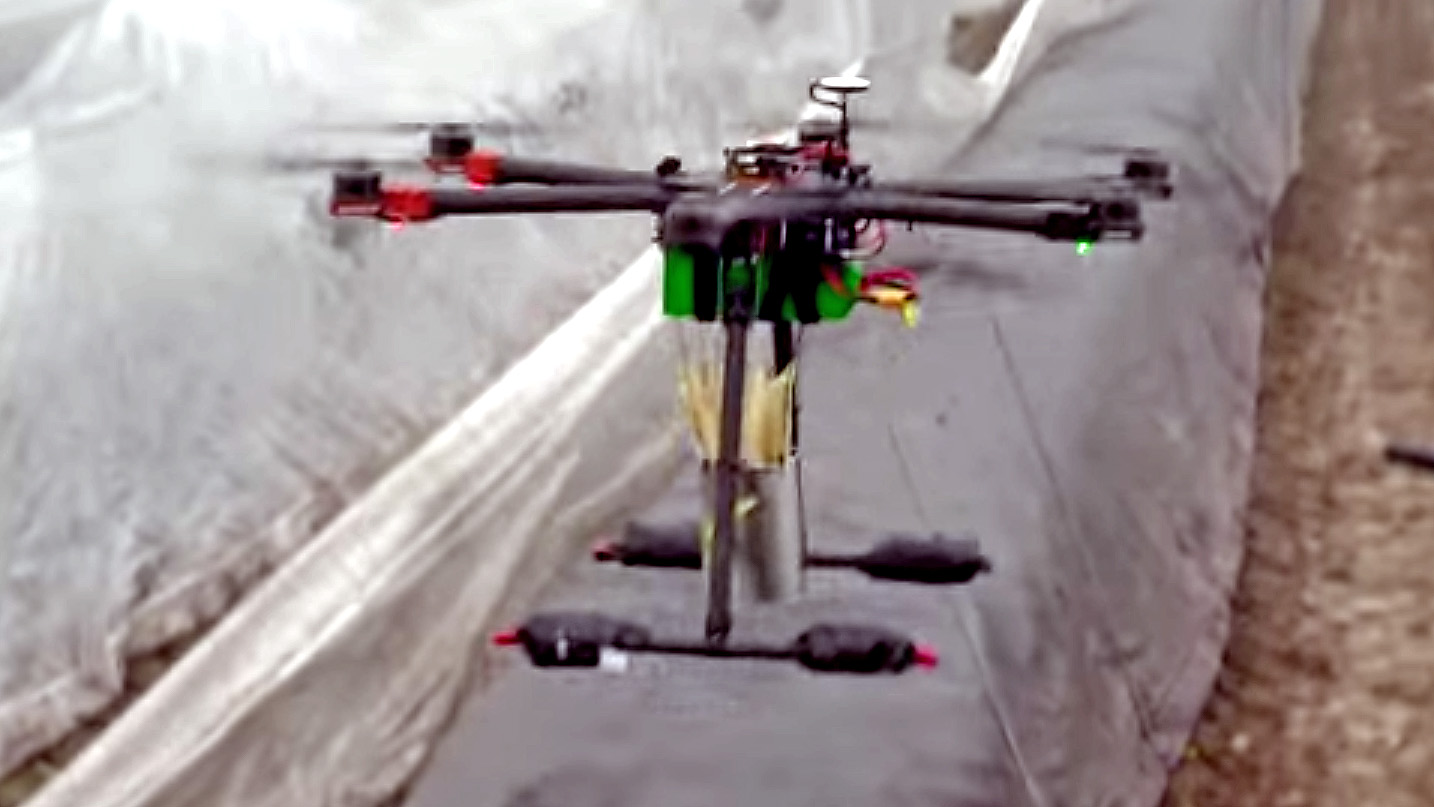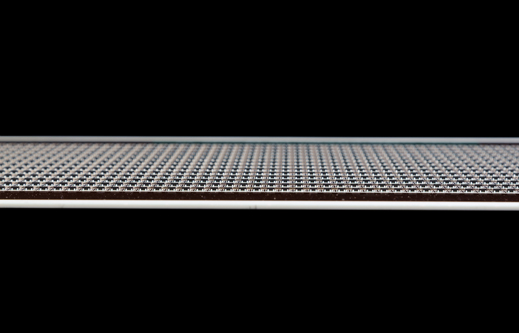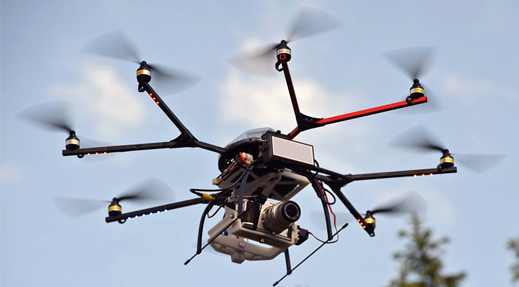A $50 Syma X5C toy quadcopter meets a homeowner's shotgun.
From Inside Edition (You must visit the Inside Edition link for the video which is only a viewable after being forced to watch a horror movie trailer.)
One video shows a drone hovering over a beautiful home in Southern California and you won't believe what happened!
The homeowner ran out of his front door with a shotgun!
The drone flew away with the guy in hot pursuit. His friend was recording cell phone video of the wild chase.
The homeowner ran around his house, spotted the drone again, took aim, and fired.
Larry Breaux of Valencia, California, is the homeowner who shot down the drone. He told INSIDE EDITION he believes the drone was sent over his house in a deliberate act of harassment.
He told INSIDE EDITION, "I get an anonymous phone call on my answering machine, 'Hey, get rid of your eyesore sign or you won't have any privacy.'"
The sign is at the entrance of his property and it advertises a Kickstarter campaign to save money for an organic lemon business he wants to start.
INSIDE EDITION's Jim Moret asked Breaux, "Do you believe that your neighbors are upset because you have that sign out there?"
He responded, "I believe one of them is."
Breaux showed us how he was sitting next to a shotgun he uses to scare off coyotes when he saw the drone hovering outside his window.
Breaux told INSIDE EDITION, "I throw my cell phone to my friend, 'Hey, videotape me.'"
He said he couldn't get a shot off at first because the shotgun was on safety, but when he turned the corner, he managed to bring down the drone with a single shot.
Somehow Larry's shot missed the computer chip that was recording video.
Breaux believes the person controlling the drone was standing on top of the hill which is on Larry's property, and when he shot the drone out of the sky, he heard that person start to yell.
He showed us what could be a figure in the distance, but it's impossible to tell for sure.
Breaux says he never found the owner of the drone and hasn't reported the incident to the police.
The video is dramatic for sure, maybe almost too dramatic, and now we wonder if it was a set up for his Kickstarter campaign, which is soliciting donations online for his organic lemon business.
So, we had to ask, "What do you want to say to those folks who think you did this for publicity?"
He responded, "All I can say is its a true story and I've got the raw video on my phone but not on the drone, and it's just a freak thing that the chips survived."
Breaux has a Kickstarter page, showing he has raised a little over 400 dollars of the 60,000 he needs to start his organic lemon business.
His Kickstarter campaign utilizes drone video that looks awfully familiar to the video in question.
Jim Moret asked, "You don't own your own drone?"
He replied, "No, never have."
So, you be the judge. Is this a case of man versus drone - or something else?
Jim Moret concluded by asking, "Just for the record, you did not shoot your own drone out of the sky?"
He said, "I did not shoot my own drone out of the sky."









